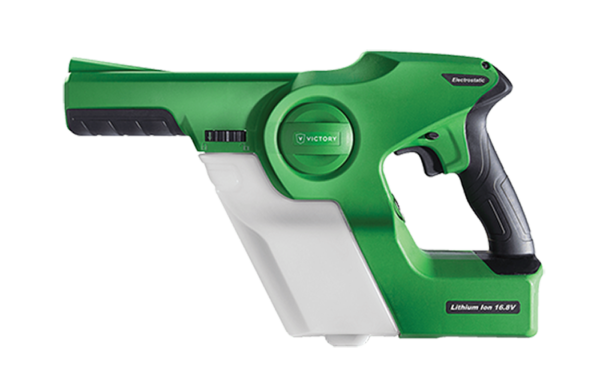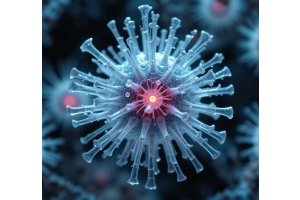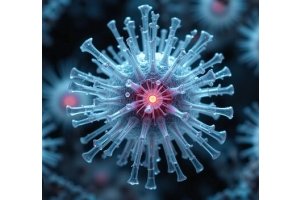
Equine Environmental Biosecurity Guide & Protocols for Biofresh & Victory
- Introduction
1.1 Purpose
This guide provides a structured protocol for integrating Biofresh and Victory into equine environments, ensuring Air and Surface Biosecurity while aligning with best practices from Dr. Katie Flynn (USEF Equine Health & Biosecurity) along with global veterinary guidelines.
1.2 Scope
This protocol applies to stables, veterinary centres, competition grounds, transport vehicles, and confined equine spaces, where maintaining high biosecurity and air quality is critical.
- Equine Biosecurity Standards & Biofresh Compliance
2.1 Key Biosecurity Challenges in Equine Environments
- Airborne microbial contamination affecting respiratory health.
- Surface biofilm formation, leading to cross-contamination.
- Ammonia buildup from urine, causing respiratory irritation.
- Limited ventilation in enclosed spaces (horseboxes, trailers, clinics, etc.).
- Contaminated saddles, saddle pads, tack, and equipment, leading to the spread of infection.
- Human cross-contamination from stable staff, veterinarians, farriers, and visitors.
2.2 Why Use Biofresh & Victory?
✅ Non-toxic and safe for equine and human exposure – Unlike harsh disinfectants, Biofresh offers continuous microbial protection without disrupting equine health.
✅ No residue or VOC emissions – Ensures high air quality without affecting horse respiratory function.
✅ Long-Term Protection – Reduces the frequency of deep cleaning cycles by extending microbial protection.
✅ Odor & Ammonia Neutralization – Reduces irritants affecting horse lungs and improves stall hygiene.
✅ Prevents cross-contamination from tack, saddles, saddle pads, farrier tools, and staff handling, improving overall biosecurity.
- Biofresh & Victory Application Protocols
3.1 Airborne Contamination Control
Objective: Maintain clean, pathogen-free air in stables, veterinary centres, and confined equine spaces.
3.1.1 Application Method
- Misting System (Victory Delivery System)
- Use electrostatic sprayer to ensure uniform coverage.
- Apply before or after horse occupancy to maintain 24-hour protection.
- Ensure mist distribution does not interfere with ventilation systems.
3.1.2 Frequency
|
Equine Environment |
Fogging Frequency |
|
Stables every 2-3 days |
Every 48-72 hours |
|
Veterinary Clinics & Treatment Areas |
Before & after each patient visit |
|
Horseboxes & Trailers (Transport) |
Before & after each journey |
|
Competition Grounds (Shared Spaces) |
Twice daily |
3.1.3 Expected Outcome
- Reduces airborne bacterial & viral loads.
- Neutralises Odor & Ammonia buildup, improving air quality.
- Supports respiratory health by minimising lung irritants.
3.2 Surface Decontamination
Objective: Prevent cross-contamination & microbial regrowth on stable floors, walls, gates, veterinary equipment, tack, saddles, saddle pads, and transport surfaces.
3.2.1 Application Method
- Direct Spray Protocol
- Use Biofresh Solution options of fragrance or no fragrance.
- Delivery spray onto stalls, grooming tools, veterinary tables, and transport dividers.
- Electrostatic Sprayer Application (Victory System) for Environment
- Covers 360° of all surfaces, including hard-to-reach areas.
- Can be used on non-invasive veterinary tools & stable equipment.
- Flairosol Spray for Direct Horse and equipment Application
- Use Flairosol misting system to apply Biofresh directly into the airspace above horse’s body, and directly onto hooves.
- Ensures gentle and even application without electrostatic charge.
- Recommended for use on sensitive areas like the hooves, and coat but not directly onto the coat to maintain the natural balance of oils in the skin. A fine mist cascading down over the animal is completely safe, and effective, allow to dry naturally.
|
Surface Type |
Application Frequency |
|
Stable Floors & Walls |
Every 48 -72 hours |
|
Horseboxes & Trailers |
Before & after each use |
|
Horse’s Body, Legs & Hooves (Flairosol) |
Before & after movement, or daily as needed |
|
Veterinary Exam Tables & Equipment |
After each patient |
3.2.3 Expected Outcome
- Prevents microbial biofilm formation on equine surfaces.
- Extends hygiene maintenance between deep cleaning cycles.
- Minimizes cross-contamination risks in shared equine spaces.
- Ensures safe and controlled application directly on tack, and equipment.
3.3 Equine Entry & Exit Hygiene
Objective: Minimize microbial transfer between locations (stables, clinics, competition areas, transport vehicles).
3.3.1 Application Method
- Biofresh Hoof & Leg Spray & Misting Protocol
- Apply Biofresh antimicrobial spray using Flairosol mist to hooves, tack, and farrier tools before moving horses between areas.
- Use misting system to disinfect horse trailers & stable entry points.
3.3.2 Frequency
|
Procedure |
Application Timing |
|
Horse Arrival at Event or Clinic |
Upon entry |
|
Hoof & Tack Disinfection (Flairosol) |
Before & after each movement, transfer of tack |
|
Transport Vehicle Sanitization (Victory) |
Before & after each trip |
3.3.3 Expected Outcome
- Reduces microbial transfer from horses, tack & equipment.
- Supports biosecurity measures in high-risk equine areas.
- Provides safe and effective application method for direct use on horses, tack, and staff equipment.
- Monitoring & Compliance
4.1 Biofresh Integration with Equine Biosecurity Protocols
|
Test |
Frequency |
Target Standard |
|
Airborne Pathogen Testing |
Weekly |
Equine Veterinary Guidelines |
|
Surface Microbial Swabs |
Every 48-72 hours |
Stable & Transport Hygiene Protocols |
|
Ammonia & VOC Testing |
Biweekly to Monthly |
Respiratory Safety Compliance |
4.2 Continuous Improvement Plan
- Adjust application protocols based on real-time air & surface microbial data.
- Regular stable staff, veterinary, & farrier training to ensure compliance with best biosecurity practices.
- Annual evaluation of Biofresh efficacy via independent equine health audits.
- Conclusion
Integrating Biofresh & Victory into Equine biosecurity protocols offers a scientifically proven, non-toxic, and long-term hygiene solution to ensure continuous microbial control, reducing infection risks and improving equine health & welfare for horses, veterinarians, farriers, and caretakers.
✅ Reduce airborne & surface contamination in stables, transport, and veterinary centres.
✅ Enhance respiratory health by minimizing ammonia exposure.
✅ Support biosecurity best practices at competition grounds, clinics, and shared equine spaces.
✅ Provide a safer environment for horses, veterinarians, and caretakers.
This guide ensures equine facilities achieve continuous microbial control, reducing infection risks and improving equine health & welfare.
In addition, we protect all staff working within these environments, which adds to reducing any cross contamination through contact with humans, riding equipment etc.






